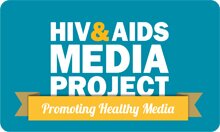Funding Sources
 Institutional HIV/AIDS spending, 1996-2002.
Institutional HIV/AIDS spending, 1996-2002.* Grant component of concessional loan disbursements Source: UNAIDS.
Donor governments provide the majority of funding in the fight against HIV/AIDS through bilateral (country-to-country) aid, such as the U.S. President's Emergency Plan for AIDS Relief (PEPFAR), and contributions to multilateral organisations such as the Global Fund to fight AIDS, Tuberculosis and Malaria (Global Fund).
Multilateral funding organisationsMultilateral funding organisations disburse funding that is pooled by countries and the private sector. The main multilateral organisations include the World Bank, the Global Fund and different UN entities.
Private sector fundingThe private sector, which includes foundations, philanthropic organisations, corporations, international NGOs and individuals, is an important part of HIV/AIDS funding. The Bill and Melinda Gates Foundation is the largest philanthropic funder in the HIV/AIDS arena. This funding is often used to pilot new strategies and build partnerships between the private and public sectors. The private sector also supports HIV/AIDS initiatives through non-cash mechanisms, including lowering the cost of HIV/AIDS medicines, in-kind support and commodity donations.
Domestic resourcesFast Facts: Individual out-of-pocket HIV/AIDS expenditures
45% Kenya (2002) 40% Chile (2002) 30% Zambia (2002) 14% Burkina Faso (2003) Percentage of total HIV/AIDS spending in the country accounted for by individuals. Source:Spending by affected country governments and households/individuals makes up a significant part of HIV/AIDS spending. UNAIDS estimates that domestic spending amounted to $2-billion in 2004.
Some national governments fund most of their country's HIV/AIDS spending. In Latin America, national governments account for more than 80% of HIV/AIDS spending. Individuals in some countries make substantial out-of-pocket payments for HIV/AIDS care. For instance, some estimates indicate that Kenyan individuals account for up to 45% of their country's total HIV/AIDS expenditure.






